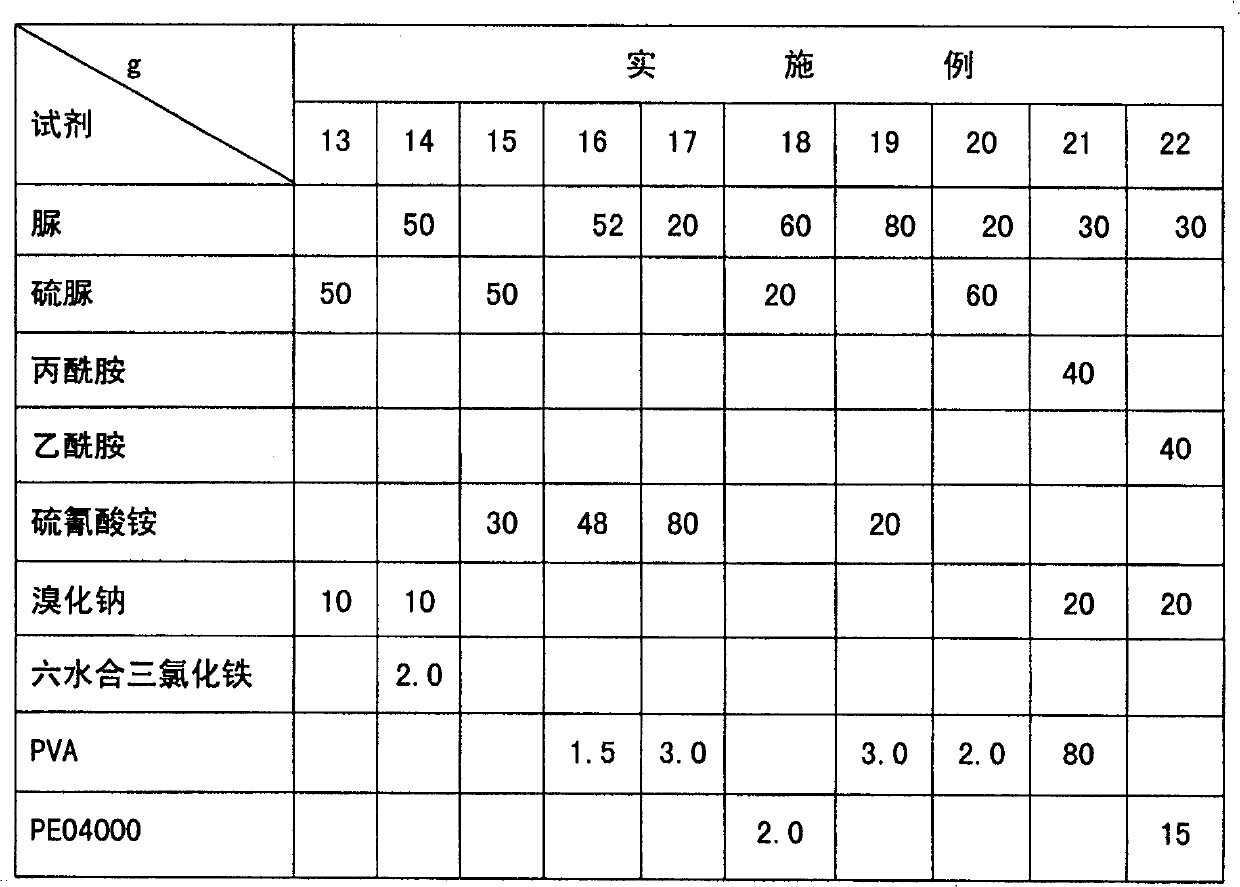Composition of releasing heat after contacting air
A compound and heat release technology, which is applied in the field of heat release compounds, can solve the problems of large temperature fluctuations, temperature reduction, and difficulty in making products, and achieve the effects of good processing performance, simple process, and convenient use
- Summary
- Abstract
- Description
- Claims
- Application Information
AI Technical Summary
Problems solved by technology
Method used
Image
Examples
Embodiment 1
[0029] Reagents: Zinc powder 50g, activated carbon 15g, ionic liquid [BMIM][BF 4 ] (chemical name is 1-methyl-3-butylimidazolium tetrafluoroborate) appropriate amount.
[0030] Mix zinc powder and activated carbon evenly, add ionic liquid and stir to make a wet paste to obtain a heat-generating compound, wrap the compound with nylon silk cloth, put a thermometer in the center, and observe the temperature change. Results: The temperature rose rapidly to 180°C and lasted for more than 30 minutes.
Embodiment 2
[0032] Reagents: urea 30g, acetamide 40g, sodium bromide 20g, zinc powder 50g, activated carbon 15g.
[0033] Weigh urea and acetamide sodium bromide according to the amount, mix and heat to melt to obtain low-temperature eutectic salt. Mix activated carbon and zinc powder in equal volumes, add the above-mentioned low-temperature eutectic salt, stir to form a wet paste to obtain a heat-generating compound, wrap the compound with nylon silk cloth, put a thermometer in the center, and observe the temperature change. Results: The temperature rose rapidly to 150°C and lasted for more than 30 minutes.
Embodiment 3
[0035] Reagents: urea 30g, propionamide 40g, sodium bromide 20g, zinc powder 50g, activated carbon 15g.
[0036] Weigh urea and propionamide sodium bromide according to the amount, mix them and stir in a container to obtain a room temperature ionic liquid (room temperature eutectic salt). Mix activated carbon and zinc powder, add the above-mentioned ionic liquid at room temperature, stir to form a wet paste to obtain a heat-generating compound, wrap the compound with nylon silk cloth, put a thermometer in the center, and observe the temperature change. Results: The temperature rose rapidly to 150°C and lasted for more than 30 minutes.
PUM
| Property | Measurement | Unit |
|---|---|---|
| melting point | aaaaa | aaaaa |
| melting point | aaaaa | aaaaa |
Abstract
Description
Claims
Application Information
 Login to View More
Login to View More - R&D
- Intellectual Property
- Life Sciences
- Materials
- Tech Scout
- Unparalleled Data Quality
- Higher Quality Content
- 60% Fewer Hallucinations
Browse by: Latest US Patents, China's latest patents, Technical Efficacy Thesaurus, Application Domain, Technology Topic, Popular Technical Reports.
© 2025 PatSnap. All rights reserved.Legal|Privacy policy|Modern Slavery Act Transparency Statement|Sitemap|About US| Contact US: help@patsnap.com

